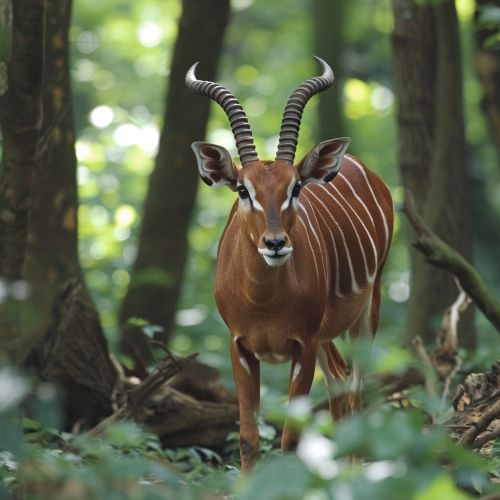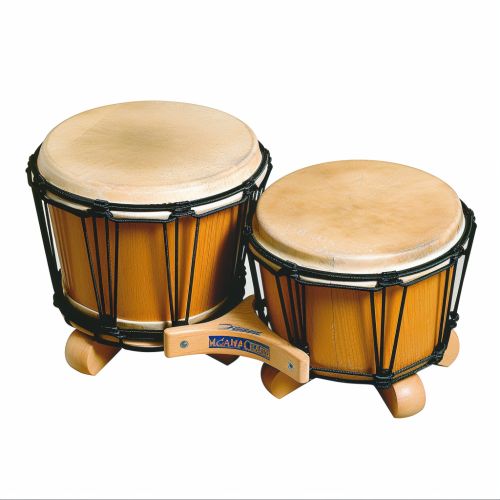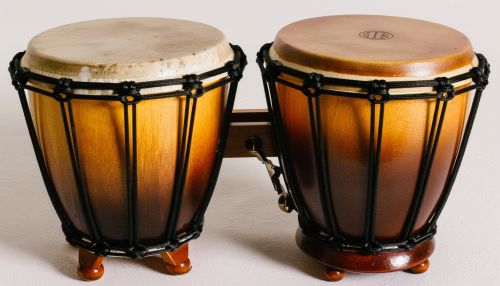Bongo
Introduction
The term "Bongo" can refer to various subjects, including musical instruments, animals, and cultural references. This article provides a comprehensive exploration of the different contexts in which the term "Bongo" is used, focusing primarily on the bongo antelope and the bongo drum. Each section delves into the specific characteristics, history, and significance of these entities.
Bongo Antelope
The bongo antelope (Tragelaphus eurycerus) is a large, forest-dwelling antelope native to Africa. It is known for its striking reddish-brown coat with white stripes, long spiraled horns, and elusive nature. Bongos are divided into two subspecies: the lowland bongo (T. e. eurycerus) and the mountain bongo (T. e. isaaci).
Physical Characteristics
Bongos are among the largest forest antelopes, with males typically weighing between 220 to 405 kilograms and females between 150 to 235 kilograms. They possess a distinctive coat pattern that serves as camouflage in their dense forest habitat. The coat is a vibrant chestnut color with 10 to 15 vertical white stripes running down the sides. Both males and females have spiraled horns, although the horns of males are more robust and can reach lengths of up to 99 centimeters.


Habitat and Distribution
Bongos inhabit tropical rainforests, montane forests, and bamboo forests. The lowland bongo is found in the rainforests of West and Central Africa, while the mountain bongo is restricted to the high-altitude forests of Kenya. Their habitat preferences include areas with dense undergrowth and abundant water sources.
Behavior and Diet
Bongos are primarily nocturnal and crepuscular, meaning they are most active during the night and twilight hours. They are shy and elusive, often retreating deeper into the forest when disturbed. Bongos are herbivores, feeding on a variety of plant materials, including leaves, shoots, grasses, and fruits. They use their prehensile tongues to grasp and pull vegetation.
Reproduction and Lifespan
Bongos have a gestation period of approximately 285 days, after which a single calf is born. Calves are hidden in dense vegetation for the first few weeks of life to protect them from predators. Bongos reach sexual maturity at around 2 to 3 years of age. In the wild, their lifespan is estimated to be around 19 years, although they can live longer in captivity.
Conservation Status
The International Union for Conservation of Nature (IUCN) classifies the lowland bongo as Near Threatened and the mountain bongo as Critically Endangered. The primary threats to bongos include habitat loss due to deforestation, hunting for bushmeat, and disease. Conservation efforts are underway to protect their habitats and establish breeding programs in captivity.
Bongo Drum
The bongo drum is a percussion instrument consisting of a pair of small, open-bottomed drums of different sizes. Originating from Cuba, bongos are an integral part of Latin American music, particularly in genres such as salsa, son cubano, and Afro-Cuban jazz.
Construction and Design
Bongo drums are traditionally made from wood, with the drumheads crafted from animal skin, typically goat or cowhide. Modern bongos may also use synthetic materials. The larger drum, known as the "hembra" (female), typically measures about 8 to 10 inches in diameter, while the smaller drum, called the "macho" (male), measures about 6 to 8 inches in diameter. The two drums are connected by a wooden bridge.


Playing Technique
Bongo drums are played with the hands and fingers, using various techniques to produce different sounds. Basic strokes include the "open tone," "muffled tone," and "slap." The open tone is produced by striking the drumhead with the fingers and allowing the sound to resonate. The muffled tone involves pressing the fingers against the drumhead to dampen the sound. The slap is a sharp, percussive stroke created by striking the drumhead with the fingertips.
Role in Music
Bongos play a crucial role in Latin American music, providing rhythmic patterns and accents that drive the music forward. In salsa, bongos often play a pattern called the "martillo," which consists of a steady, repetitive rhythm. In Afro-Cuban jazz, bongos are used for improvisation and soloing, adding a dynamic and expressive element to the music.
Historical Background
The bongo drum has its roots in African drumming traditions brought to Cuba by enslaved Africans. Over time, these drums evolved and became a staple of Cuban music. The popularity of bongos spread throughout Latin America and eventually to the United States, where they became a key component of Latin jazz and other musical styles.
